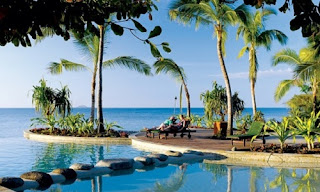Sustainable Tourism and the Triple Bottom Line

So what is sustainable tourism? The UN World Tourism Organization (UNWTO) (www.unwto.org) has defined sustainable tourism as an enterprise that achieves a balance between the environmental, economic, and socio-cultural aspects of tourism development so as to guarantee long-term benefits to recipient communities. According to UNWTO, it should: - Make optimal use of environmental resources, maintaining essential ecosystems and helping conserve biodiversity Respect socio-cultural authenticity, conserve built and living cultural heritage, and contribute to cross-cultural understanding and tolerance Ensure long-term socio-economic benefits, fairly distributed to all community stakeholders, including stable employment and income-earning opportunities, social services, and poverty alleviation Sustainable Tourism and the Triple Bottom Line This is commonly called the triple bottom line for sustainable development: environmental, economic, and cultural returns on...